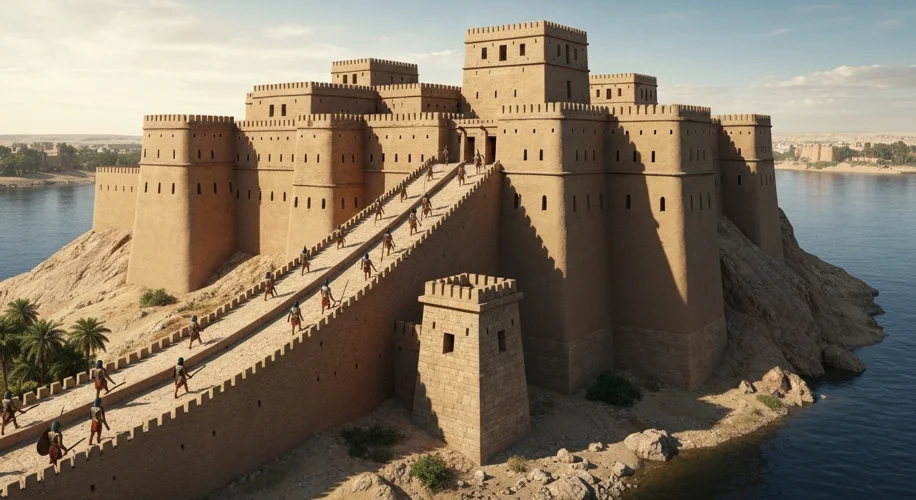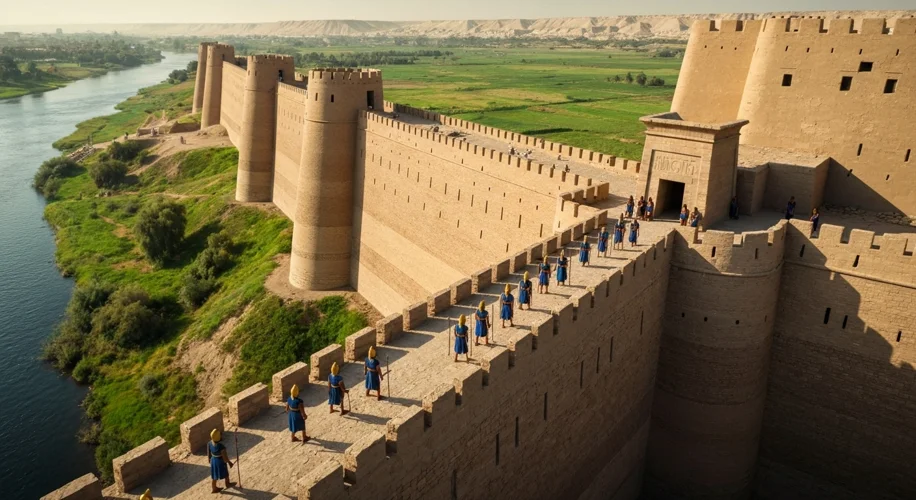The sands of Egypt whisper tales of pharaohs, pyramids, and an empire that stretched across millennia. But beneath the iconic grandeur of temples and tombs lies another, often overlooked, facet of this ancient civilization: its formidable fortresses. These were not mere walls; they were strategic bastions, silent sentinels that guarded the lifeblood of Egypt – the Nile – and projected its power far beyond its borders.
From the dawn of the Dynastic Period, the Egyptians understood the paramount importance of defense. Their vast territory, rich with resources and a vibrant culture, was a tempting prize for envious neighbors and opportunistic raiders. To safeguard their kingdom, control vital trade routes, and maintain internal stability, they erected a network of impressive fortifications.

A Fortress for Every Need
Ancient Egyptian fortresses served a multifaceted purpose. Some were built to protect vulnerable border regions, particularly along the eastern and southern frontiers, where encounters with Nubian kingdoms and desert tribes were common. Others were positioned along the Nile to control riverine trade, collecting tolls and preventing illicit movement of goods and people. Still others acted as administrative centers, housing garrisons of soldiers, granaries, and workshops, solidifying Egyptian authority in newly conquered territories or restive provinces.
Consider the imposing fortress of Buhen, located in Lower Nubia (modern-day Sudan). Built by the Middle Kingdom pharaohs, its sheer scale was awe-inspiring. This wasn’t a simple outpost; it was a complex military city, complete with an outer curtain wall, a moat fed by the Nile, inner walls, and a formidable citadel. The garrison stationed here would have faced the harsh desert environment and the constant threat of Nubian incursions. The detailed planning, with its angled walls designed to deflect siege weaponry and its strategically placed watchtowers, speaks volumes about Egyptian military engineering prowess.
Another crucial example is the fortress complex at the southern border of Egypt, near Aswan. These fortresses, such as those at Semna and Kumma, were instrumental in controlling the flow of trade and monitoring the movements of peoples from the south. The famous stela of Senusret III found at Semna, a stern decree detailing harsh punishments for Nubians attempting to cross the border, vividly illustrates the purpose and the strictness with which these fortifications were managed.
Masters of Mudbrick and Stone
While stone was employed for important structures like temples and royal tombs, many Egyptian fortresses were primarily constructed from mudbrick. This might seem less robust than stone, but it was a practical and readily available material in the Nile Valley. Mudbrick, when expertly laid and often reinforced with timber, could create walls of immense thickness and height, capable of withstanding the rigors of siege warfare. The Egyptians also ingeniously incorporated defensive features into their mudbrick designs. Crenellations adorned the ramparts, providing archers with cover, while sloping outer walls made them harder to scale and more resistant to battering rams. \
The strategic placement of these fortresses was as critical as their construction. They were often built on elevated ground, offering commanding views of the surrounding terrain and any approaching enemy forces. Their proximity to the Nile ensured a constant supply of water and facilitated the movement of troops and provisions. The Egyptians were adept at adapting their architecture to the landscape, creating defenses that were not only strong but also integrated with their environment.
The Human Element: Life Within the Walls
Life within these fortresses was undoubtedly harsh and disciplined. Garrisons comprised soldiers, officers, engineers, and laborers, all living and working under the watchful eye of a fort commander. Barracks provided living quarters, while granaries stored essential food supplies, often for extended sieges. Workshops would churn out weapons, tools, and repairs, making the fortress as self-sufficient as possible. The psychological aspect of military life, the constant vigilance and separation from family, must have been immense. Yet, these soldiers were the vanguards of Egyptian civilization, the men who stood between their homeland and the chaos of the outside world.
Echoes Through Time
The legacy of these ancient fortresses extends far beyond their physical remnants. They are tangible proof of Egypt’s sophisticated military organization, its engineering capabilities, and its commitment to territorial integrity. They highlight a crucial aspect of Egyptian history that often gets overshadowed by the more sensational discoveries of tombs and temples. These weren’t just structures; they were the iron teeth of the Egyptian state, biting back against threats and ensuring the continued stability and prosperity of one of the world’s greatest ancient civilizations.
Today, many of these fortifications lie in ruins, weathered by centuries of sun and wind. Yet, their imposing silhouettes against the desert sky continue to evoke a sense of their former power and strategic importance. They remind us that the grandeur of ancient Egypt was not solely built on monuments to the gods and the afterlife, but also on the practical, unyielding strength of its defenses.

